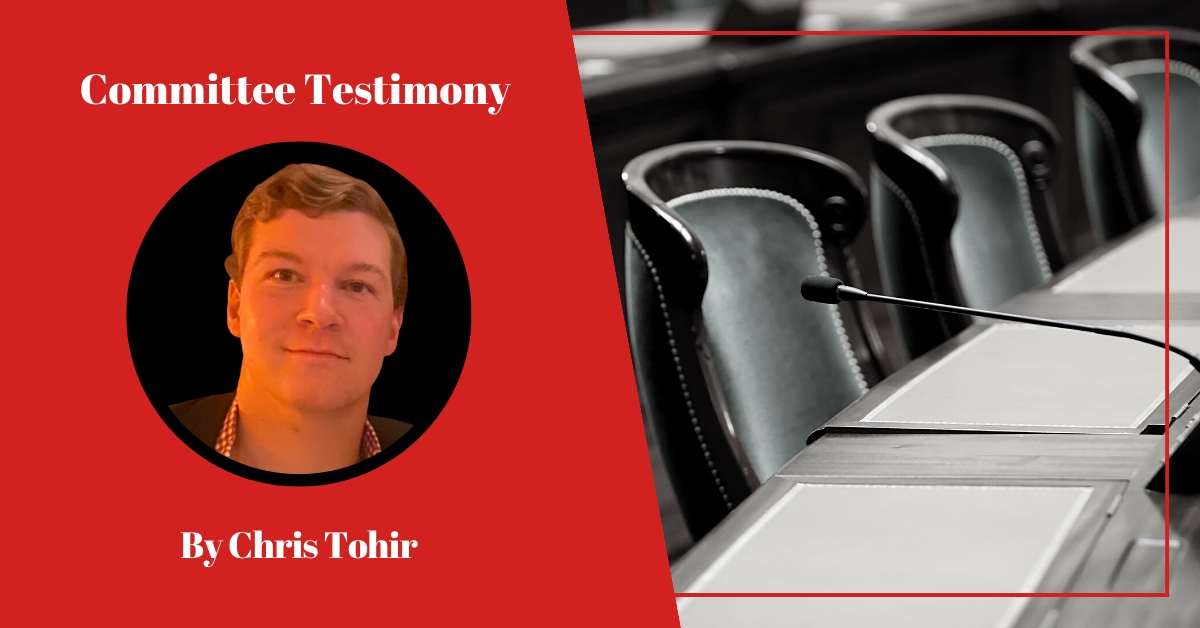February 27, 2023
Thank you for the opportunity to testify before the Housing Committee regarding H.B. 5326 and H.B. 6633.. My name is Christopher Tohir and I am the legal and policy analyst at Yankee Institute, a policy organization that empowers the people of Connecticut to build a brighter, freer future for themselves and their families.
The issue of affordable housing across our state has been unnecessarily divisive. Accusations of “classism” and “racism” too often are used to silence responsible discussions that weigh important issues of inclusion against the principles of local control, as well as the unintended consequences of high-density affordable housing.
Yankee Institute supports H.B. 5326 because it takes a common-sense approach to calculating a municipality’s stock of affordable housing for purposes of 8-30g. There is no reason not to count all a community’s affordable housing — whether or not it is deed restricted or public housing. If 8-30g’s stated objective — affordable housing — is being met, that should be sufficient.
Otherwise, one is tempted to suspect the objective is less to achieve a critical mass of affordable housing than to permit developers to ride roughshod through some of our state’s most picturesque small towns. Indeed, serious problems can arise if high density affordable housing is not undertaken with careful planning and attention to existing community resources.
These are two important reasons Yankee Institute strongly opposes H.B. 6633. This legislation not only threatens the cherished Connecticut tradition of local control of municipal towns, but by forcing potentially unworkable mandates on them, it could jeopardize their operational and financial well-being.
Towns can encounter massive logistic problems in their efforts to implement high-density, affordable housing. These include significant negative impacts on the sewer system, leading to issues harming the environment, including: (1) overloading the sewer system if it is not adapted to handle an increase in the volume of people; (2) an increased risk of blockages in the sewer system as more wastewater and solid waste is being flushed down the drains; (3) reduced water quality; and (4) higher maintenance costs.
High-density housing developments also need to consider the police and fire service staffing adjustments that would have to be made to guarantee citizen safety. In many Connecticut communities, the firefighter staff is largely comprised of volunteers and is staffed with three or less people. Apartment fires require larger firefighting staffs to enter units, secure fire hoses, and search for victims. For example, in New Haven, due to housing density, a simple house fire requires more than 26 firefighters to arrive within minutes. In smaller communities, more personnel and specialized equipment will be needed — adding appreciably to staffing and pension budgets.
Similarly, police service and response times are impacted by calls for increased services. High-density housing results in increased calls for assistance to the police department and medical services. Staffing will need to be readjusted and reconsidered to account for increased calls.
Along with the logistical problems that accompany high-density housing, it is important to consider how high-density housing will affect the appearance and nature of Connecticut’s small towns — a key part of its attraction to tourists. An inordinate increase in traffic and activity can likewise transform neighborhoods, depriving homeowners of the single-home environment into which they thought they were buying.
That is why local control is vital to ensuring that the important issue of affordable housing can be addressed in a way that is equitable and sustainable for all involved. Municipal officials, with the deepest knowledge of community needs and priorities, are best positioned to balance the competing interests that undergird so much housing policy. H.B. 6633 represents a fundamental challenge to this principle — and imposes unforeseeable costs that will strain our state’s already-formidable affordability crisis.
In contrast, by counting all “naturally occurring” affordable housing into a community’s calculation of its affordable housing stock, H.B. 5326 acknowledges the real-world strains imposed on small municipalities by high density affordable housing. At the same time, it demonstrates a laudable commitment to the principles of accessibility and inclusion that undergird 8-30g.
Thank you.

